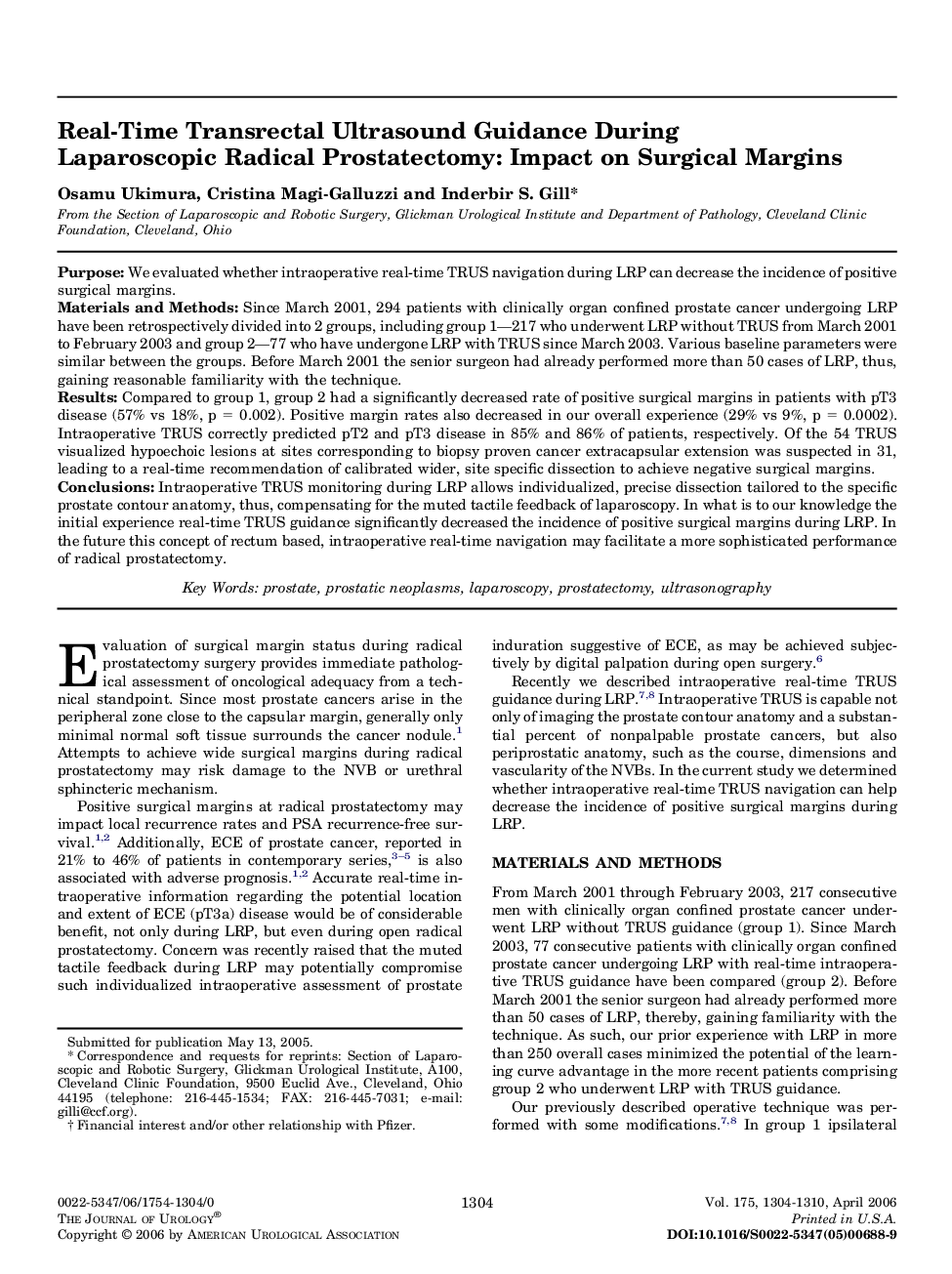| Article ID | Journal | Published Year | Pages | File Type |
|---|---|---|---|---|
| 3879757 | The Journal of Urology | 2006 | 7 Pages |
PurposeWe evaluated whether intraoperative real-time TRUS navigation during LRP can decrease the incidence of positive surgical margins.Materials and MethodsSince March 2001, 294 patients with clinically organ confined prostate cancer undergoing LRP have been retrospectively divided into 2 groups, including group 1—217 who underwent LRP without TRUS from March 2001 to February 2003 and group 2—77 who have undergone LRP with TRUS since March 2003. Various baseline parameters were similar between the groups. Before March 2001 the senior surgeon had already performed more than 50 cases of LRP, thus, gaining reasonable familiarity with the technique.ResultsCompared to group 1, group 2 had a significantly decreased rate of positive surgical margins in patients with pT3 disease (57% vs 18%, p = 0.002). Positive margin rates also decreased in our overall experience (29% vs 9%, p = 0.0002). Intraoperative TRUS correctly predicted pT2 and pT3 disease in 85% and 86% of patients, respectively. Of the 54 TRUS visualized hypoechoic lesions at sites corresponding to biopsy proven cancer extracapsular extension was suspected in 31, leading to a real-time recommendation of calibrated wider, site specific dissection to achieve negative surgical margins.ConclusionsIntraoperative TRUS monitoring during LRP allows individualized, precise dissection tailored to the specific prostate contour anatomy, thus, compensating for the muted tactile feedback of laparoscopy. In what is to our knowledge the initial experience real-time TRUS guidance significantly decreased the incidence of positive surgical margins during LRP. In the future this concept of rectum based, intraoperative real-time navigation may facilitate a more sophisticated performance of radical prostatectomy.
